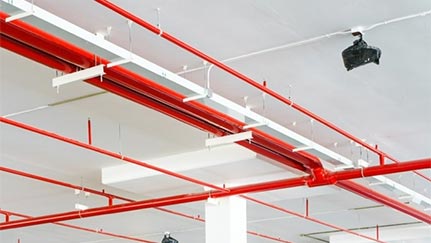Lack of proper heating during cold weather months can create a significant hazard for your fire sprinkler system. Find out what you can do to minimize your risk.
Subscribe to our newsletter for timely content in your inbox

The damage caused by a winter storm in Texas in early 2021, combined with the subsequent power outages, reminds us of a problem that automatic sprinklers can face under extreme weather conditions and lack of proper heating. Specifically, the supply lines to automatic sprinklers can freeze, which can lead to significant water damage, as well as an impairment to the automatic sprinkler system itself. Once an impairment occurs, the building is left without any protection against a potential fire. This can result in significant fire losses to property and can endanger the occupants of the building.
Frozen water pipes are one of the most common service calls plumbers make in winter, and it’s no different with sprinkler systems. The exposure level increases significantly when temperatures drop to 40° Fahrenheit or below. Typically, frozen pipes burst when a building is not occupied, as the building usually isn’t heated to the same level as when the building is occupied. Once a pipe bursts, the water will continue to flow from the pipes until someone responds to turn the main water flow valve off. The response could take hours, which means water damage to the contents and the building’s interior construction materials could be significant. In a multi-story building, several floors could end up sustaining water damage.
Actions a business can take to help minimize sprinkler pipes from freezing causing water damage and impairing the system include:
For more information on automatic sprinkler systems and impairments, see our Fire Protection Impairment Interactive Program and our Fire Protection Impairment Infographic.